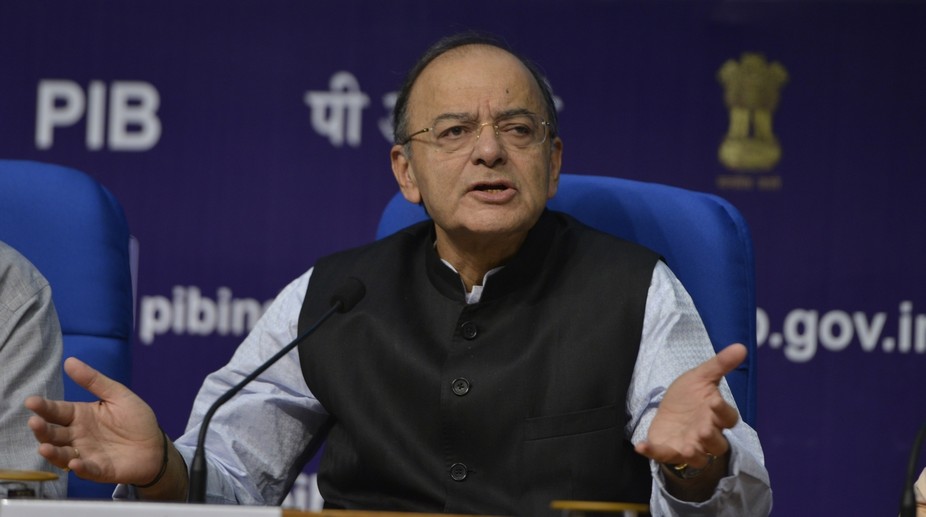Piyush Goyal concludes visit to Saudi Arabia
During the visit, Goyal participated in the Plenary Session of the 8th Edition of Future Investment Initiative (FII), with representatives from global governments and the industry.

Finance Minister, Arun Jaitley (Photo: IANS)
An inter-ministerial committee headed by Finance Minister Arun Jaitley to oversee the merger of public sector banks (PSBs) was constituted on Monday, following the recent government announcement of a massive recapitalisation plan for public sector lenders.
“Govt walks the talk on banking reforms; constitutes Alternative Mechanism for PSBs consolidation; Finance Minister to head,” Financial Services Secretary Rajiv Kumar tweeted.
The other members of the committee include Defence Minister Nirmala Sitharaman and Railway Minister Piyush Goyal.
Advertisement
Earlier, the government has decided to set up an alternative mechanism to expedite the process of PSB consolidation, which would oversee the proposals coming from the PSB boards.
This followed state-run State Bank of India’s (SBI) merger with its five associate banks and the Bharatiya Mahila Bank earlier this year.
In a stimulus package aimed to boost flagging economic growth, create jobs and increase credit flow, the cabinet last week approved a Rs 2.11 lakh crore recapitalisation plan for state-run banks and massive road infrastructure investment of nearly Rs 7 lakh crore over five years.
Of the support to banks, Rs 1.35 lakh crore will be raised through recapitalisation bonds and the remaining sum through budgetary support and market borrowings.
Announcing the package here, Finance Minister Arun Jaitley said the details of reform measures for the public sector banks would be unveiled at a later date.
Chief Economic Advisor Arvind Subramanian clarified that the recapitalisation bonds would count as debt, while their exact nature would be made available in due course.
Pitching for consolidation in the banking sector, Subramanian later said that India should ideally have 5 to 7 large banks.
“Basically India needs about five, six, seven reasonably big banks both in public and private sector, and to be able to compete domestically and be competitive internationally,” he said during a lecture at the SGTB Khalsa College here last week.
The CEA cited the example of China, saying that country has four large banks, which are currently among the biggest in the world.
Advertisement